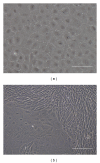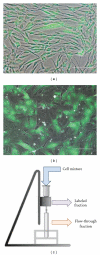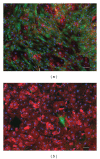Optimization of human corneal endothelial cells for culture: the removal of corneal stromal fibroblast contamination using magnetic cell separation
- PMID: 22287967
- PMCID: PMC3263628
- DOI: 10.1155/2012/601302
Optimization of human corneal endothelial cells for culture: the removal of corneal stromal fibroblast contamination using magnetic cell separation
Abstract
The culture of human corneal endothelial cells (CECs) is critical for the development of suitable graft alternative on biodegradable material, specifically for endothelial keratoplasty, which can potentially alleviate the global shortage of transplant-grade donor corneas available. However, the propagation of slow proliferative CECs in vitro can be hindered by rapid growing stromal corneal fibroblasts (CSFs) that may be coisolated in some cases. The purpose of this study was to evaluate a strategy using magnetic cell separation (MACS) technique to deplete the contaminating CSFs from CEC cultures using antifibroblast magnetic microbeads. Separated "labeled" and "flow-through" cell fractions were collected separately, cultured, and morphologically assessed. Cells from the "flow-through" fraction displayed compact polygonal morphology and expressed Na(+)/K(+)ATPase indicative of corneal endothelial cells, whilst cells from the "labeled" fraction were mostly elongated and fibroblastic. A separation efficacy of 96.88% was observed. Hence, MACS technique can be useful in the depletion of contaminating CSFs from within a culture of CECs.
Figures




References
-
- Carlson KH, Bourne WM, McLaren JW, Brubaker RF. Variations in human corneal endothelial cell morphology and permeability to fluorescein with age. Experimental Eye Research. 1988;47(1):27–41. - PubMed
-
- Bourne WM, Nelson LIL, Hodge DO. Central corneal endothelial cell changes over a ten-year period. Investigative Ophthalmology and Visual Science. 1997;38(3):779–782. - PubMed
LinkOut - more resources
Full Text Sources
Other Literature Sources
Miscellaneous

